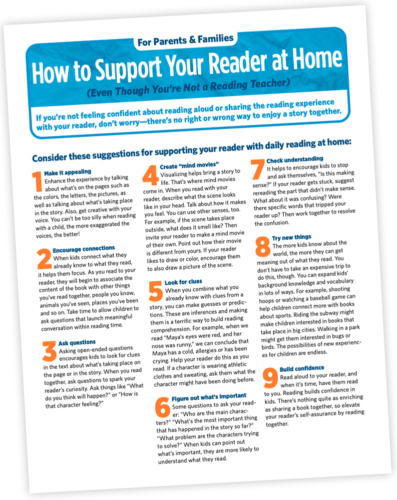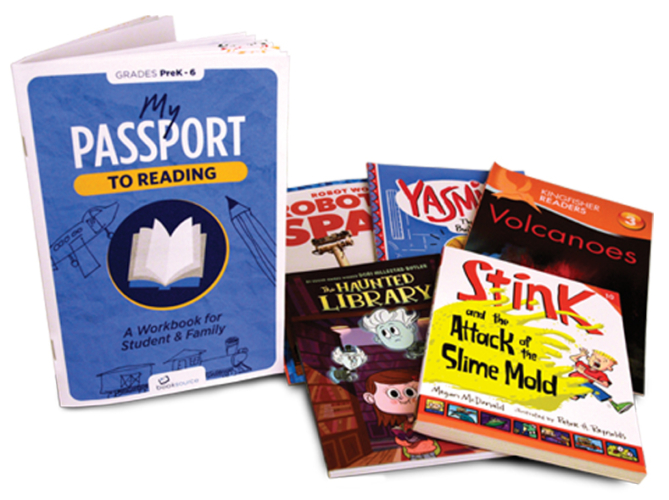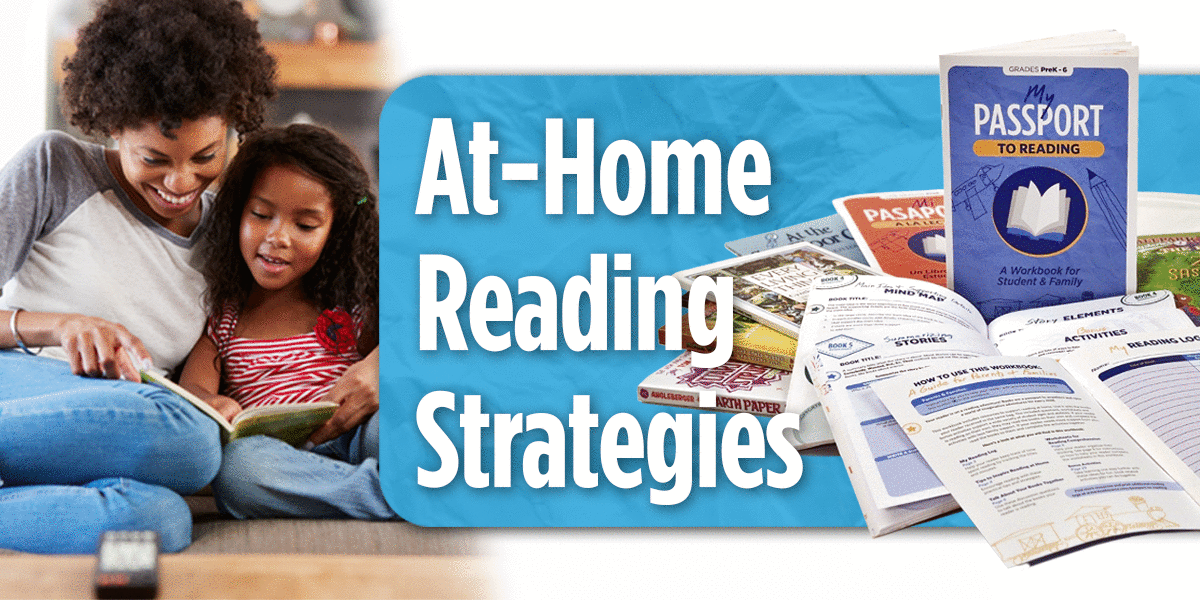If your school or district is receiving CARES Act funding, you can use it to meet your students’ literacy needs. Because your students still need books, we are working with educators across the country to create custom solutions that capitalize on their CARES funding and ensure book access and choice for students.
As teachers, you know that reading together supports children’s literacy development, specifically in the areas of reading comprehension, fluency and vocabulary. Reading is an emphasis in your classroom, but what happens when your students go home, especially when their whole learning experience is remote because of the pandemic?
Although most of your students’ parents and families read with their readers at home, they likely have not received guidance to help their readers with reading comprehension.
When children read or when parents or families read to their readers, it’s important for them to be active readers. This means focusing on the text, questioning it and taking mental notes. With a little help, parents and families can work on these skills with kids while reading at home.
Following are some strategies that you can share with parents and families to practice reading with children at home.
A message for parents & families:
If you’re not feeling confident about reading aloud or sharing the reading experience with your reader, don’t worry—there’s no right or wrong way to enjoy a story together. Consider these suggestions for supporting your reader with daily reading at home:
1. Make it appealing

Enhance the experience by talking about what’s on the pages such as the colors, the letters, the pictures, as well as talking about what’s taking place in the story. Also, get creative with your voice. You can’t be too silly when reading with a child, the more exaggerated the voices, the better!
2. Encourage connections

When kids connect what they already know to what they read, it helps them focus. As you read to your reader, they will begin to associate the content of the book with other things you’ve read together, people you know, animals you’ve seen, places you’ve been and so on. Take time to allow children to ask questions that launch meaningful conversation within reading time.
3. Ask questions

Asking open-ended questions encourages kids to look for clues in the text about what’s taking place on the page or in the story. When you read together, ask questions to spark your reader’s curiosity. Ask things like “What do you think will happen?” or “How is that character feeling?”
4. Create “mind movies”

Visualizing helps bring a story to life. That’s where mind movies come in. When you read with your reader, describe what the scene looks like in your head. Talk about how it makes you feel. You can use other senses, too. For example, if the scene takes place outside, what does it smell like? Then invite your reader to make a mind movie of their own. Point out how their movie is different from yours. If your reader likes to draw or color, encourage them to also draw a picture of the scene.
5. Look for clues

When you combine what you already know with clues from a story, you can make guesses or predictions. These are inferences and making them is a terrific way to build reading comprehension. For example, when we read “Maya’s eyes were red, and her nose was runny,” we can conclude that Maya has a cold, allergies or has been crying. Help your reader do this as you read. If a character is wearing athletic clothes and sweating, ask them what the character might have been doing before.
6. Figure out what’s important

Some questions to ask your reader: “Who are the main characters?” “What’s the most important thing that has happened in the story so far?” “What problem are the characters trying to solve?” When kids can point out what’s important, they are more likely to understand what they read.
7. Check understanding

It helps to encourage kids to stop and ask themselves, “Is this making sense?” If your reader gets stuck, suggest rereading the part that didn’t make sense. What about it was confusing? Were there specific words that tripped your reader up? Then work together to resolve the confusion.
8. Try new things

The more kids know about the world, the more they can get meaning out of what they read. You don’t have to take an expensive trip to do this, though. You can expand kids’ background knowledge and vocabulary in lots of ways. For example, shooting hoops or watching a baseball game can help children connect more with books about sports. Riding the subway might make children interested in books that take place in big cities. Walking in a park might get them interested in bugs or birds. The possibilities of new experiences for children are endless.
9. Build confidence

Read aloud to your reader, and when it’s time, have them read to you. Reading builds confidence in kids. There’s nothing quite as enriching as sharing a book together, so elevate your reader’s self-assurance by reading together.



Click above to download a list of these strategies that can be emailed or printed and sent home with students. Make sure the parents and families of your students feel confident sharing the reading experience!


Are you looking for take home reading books and materials to support reading comprehension at home? Visit www.booksource.com/take-home-packs for more information about our Take Home Reading & Literacy Packs for grades PreK-6.
What are your favorite tips to help parents and families read with their readers at home? Share in the comments.








[…] 9 At-Home Reading Strategies to Share with Parents & Families […]